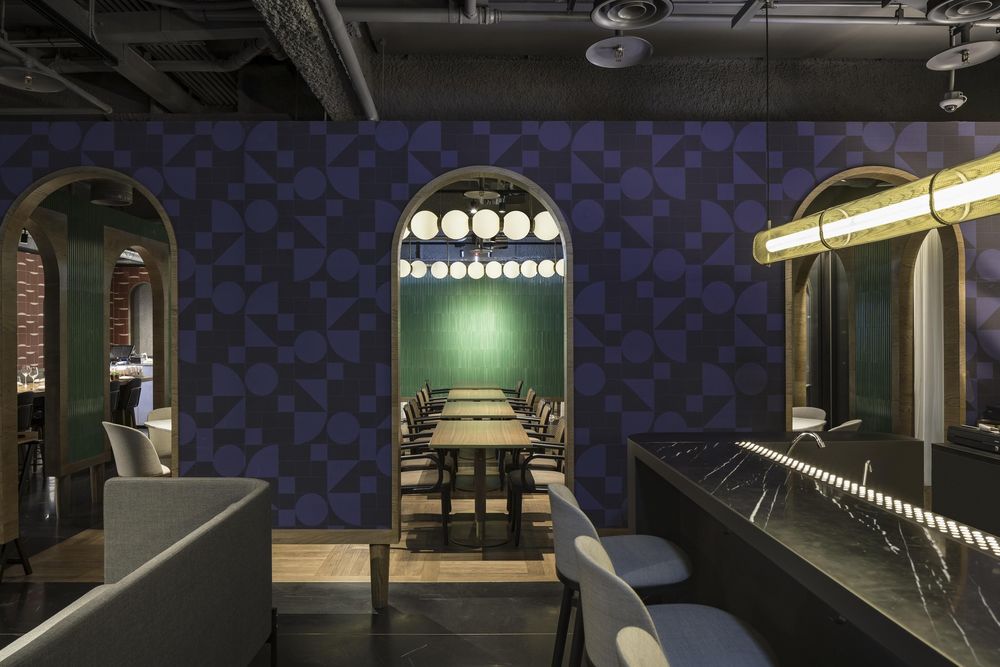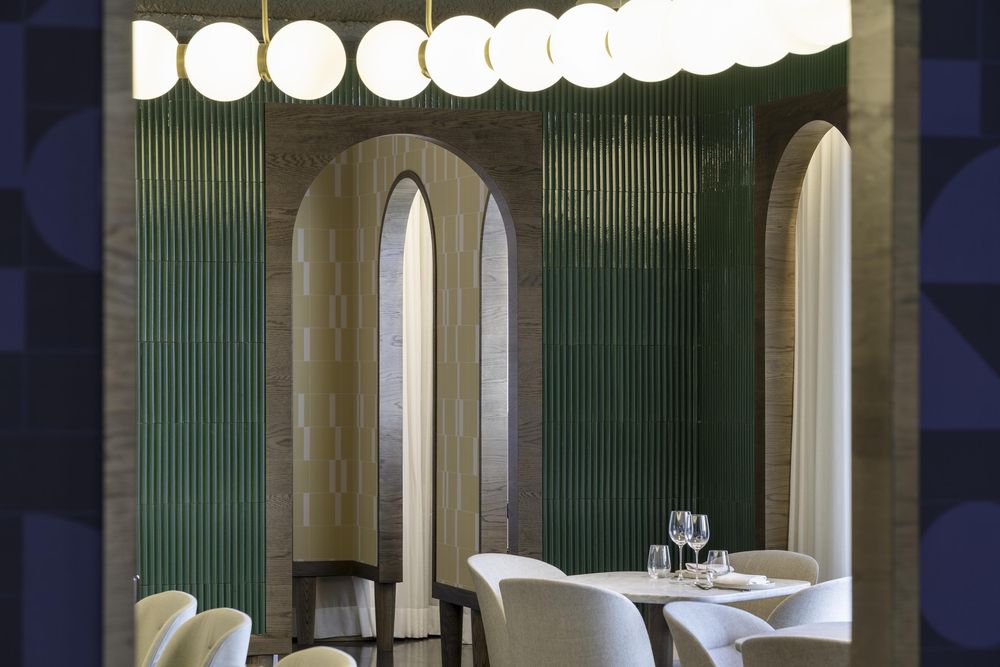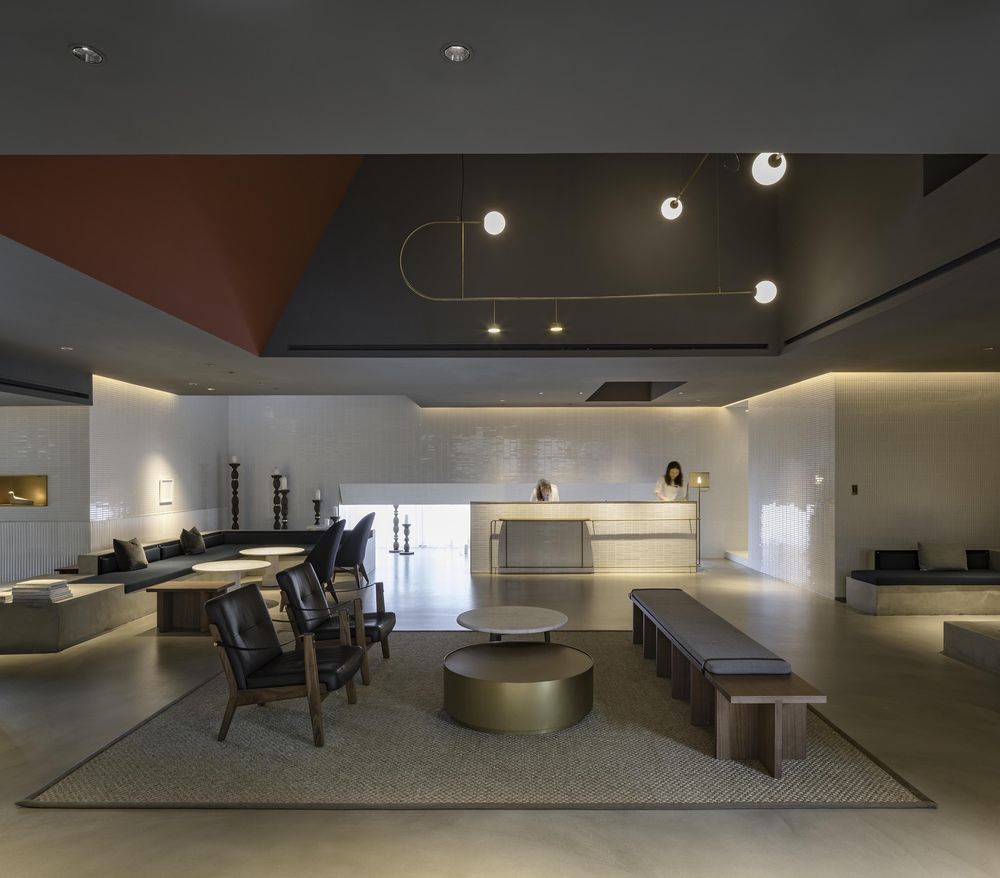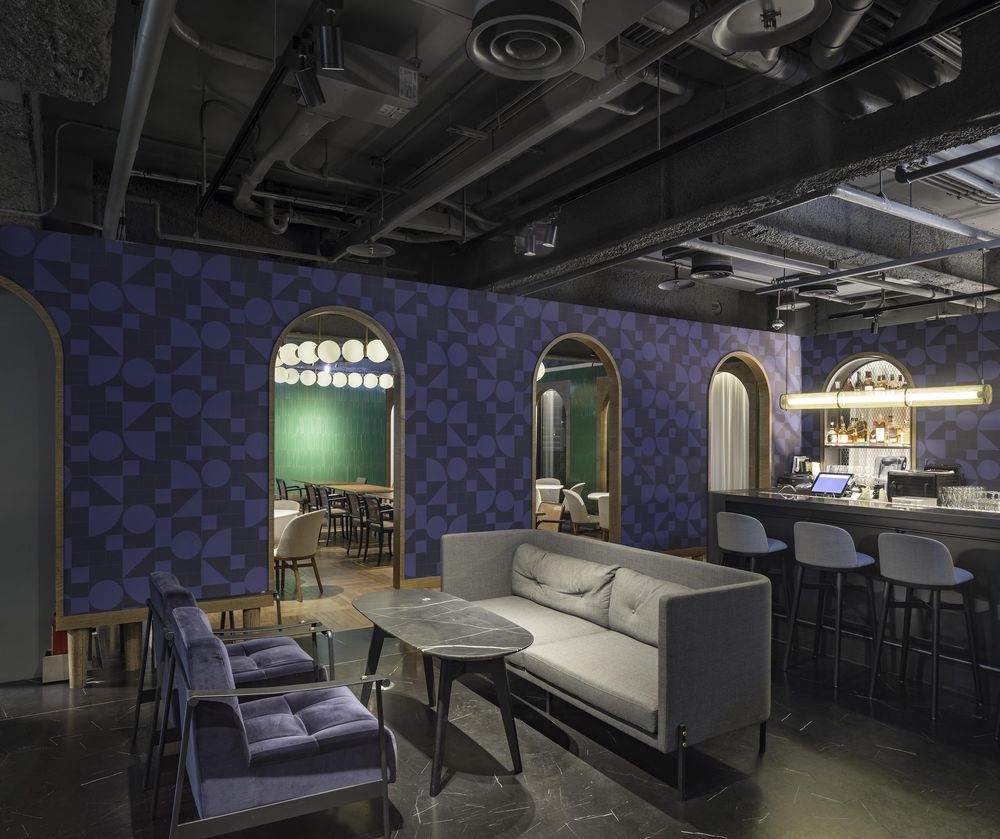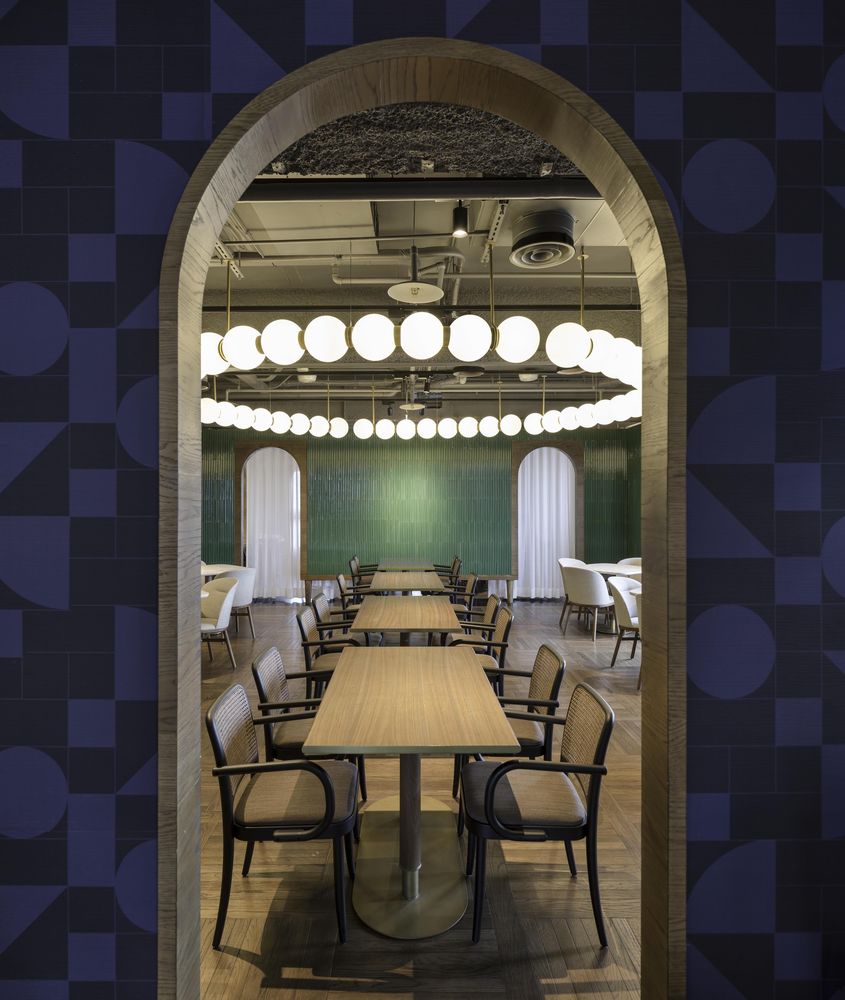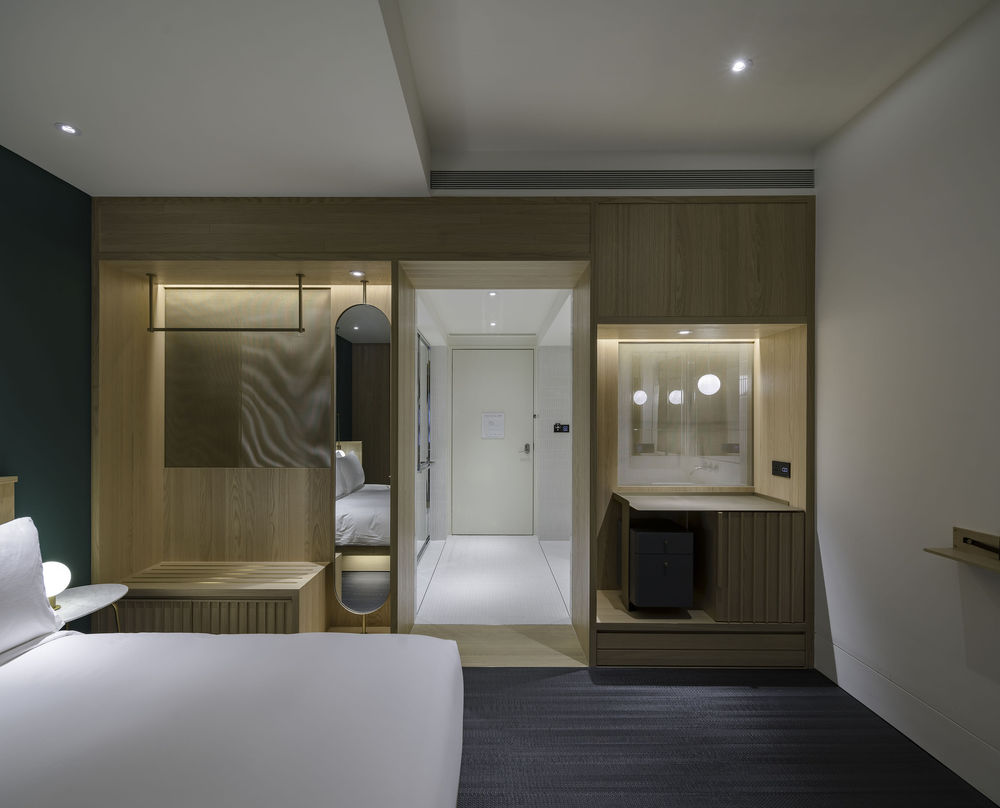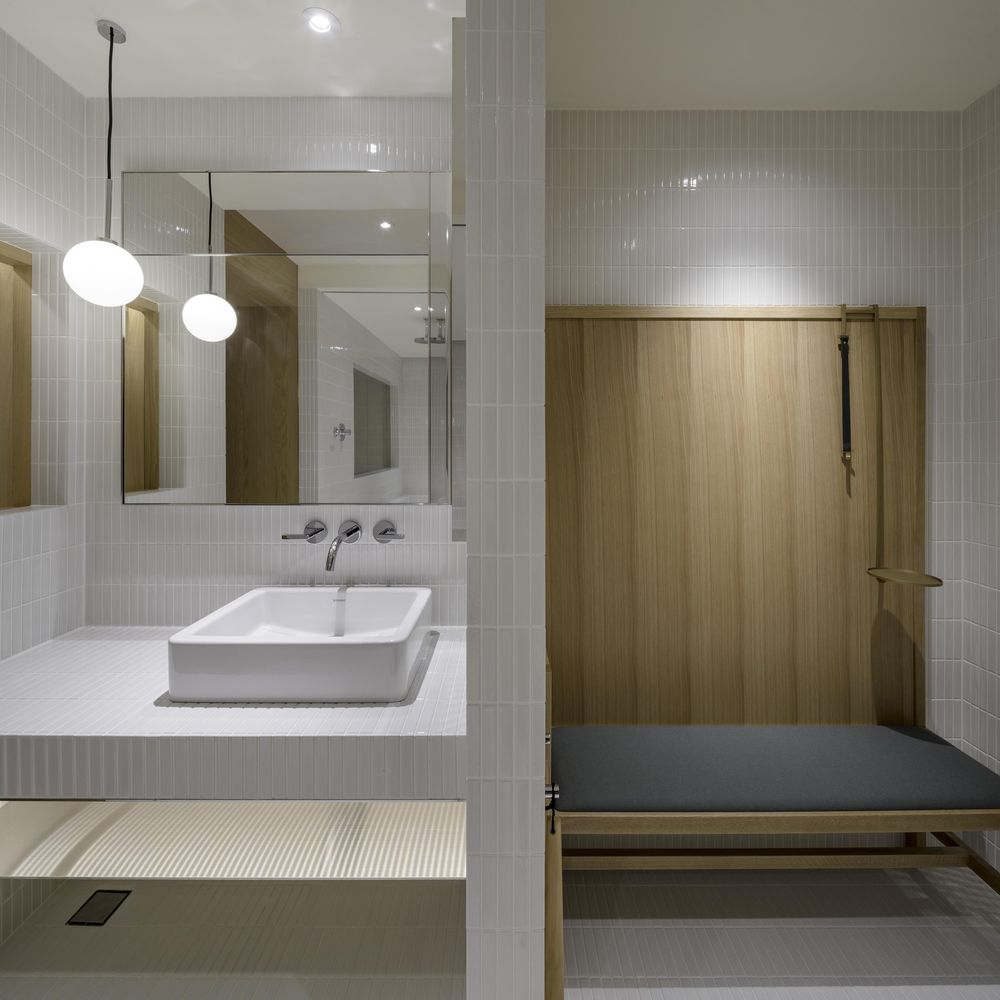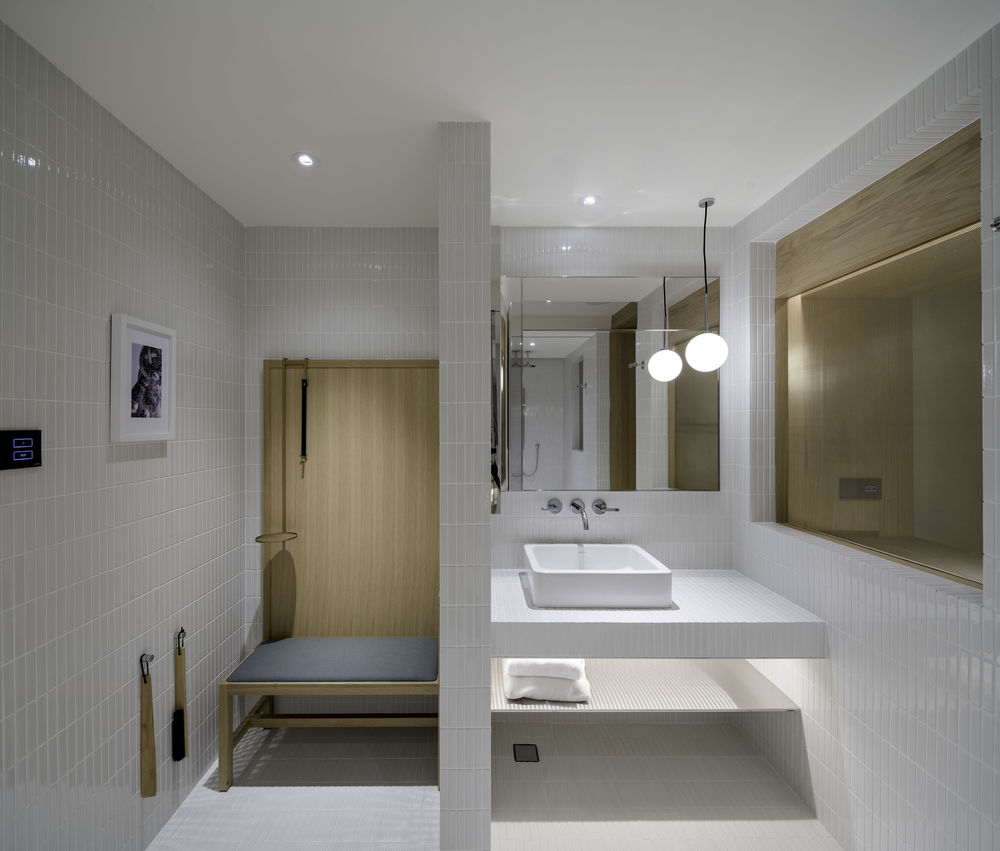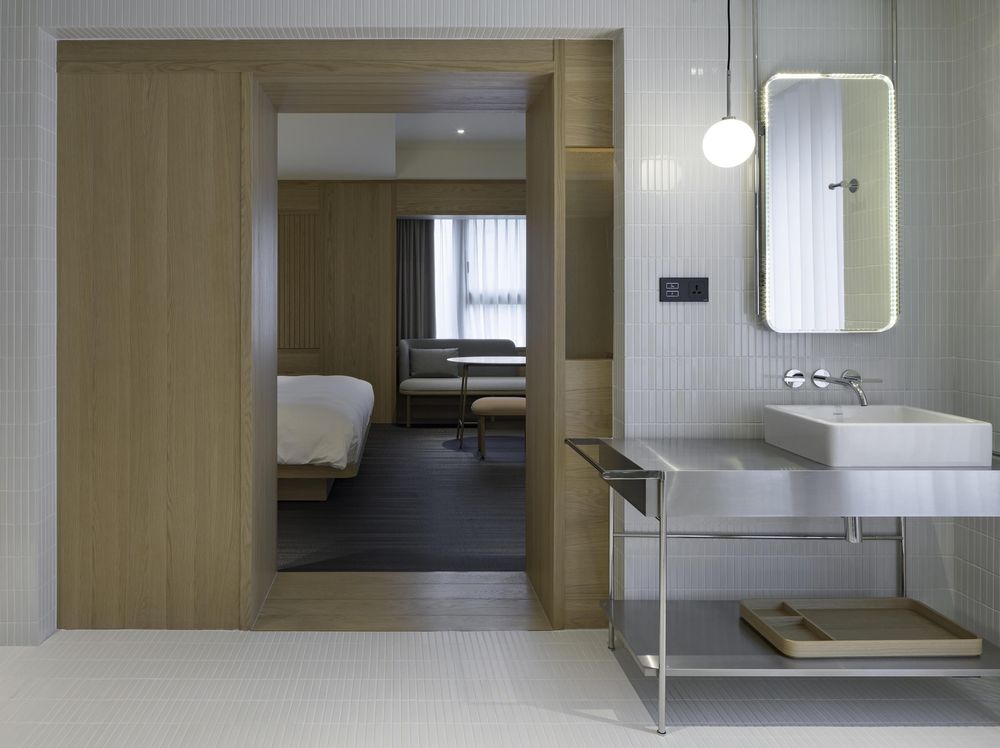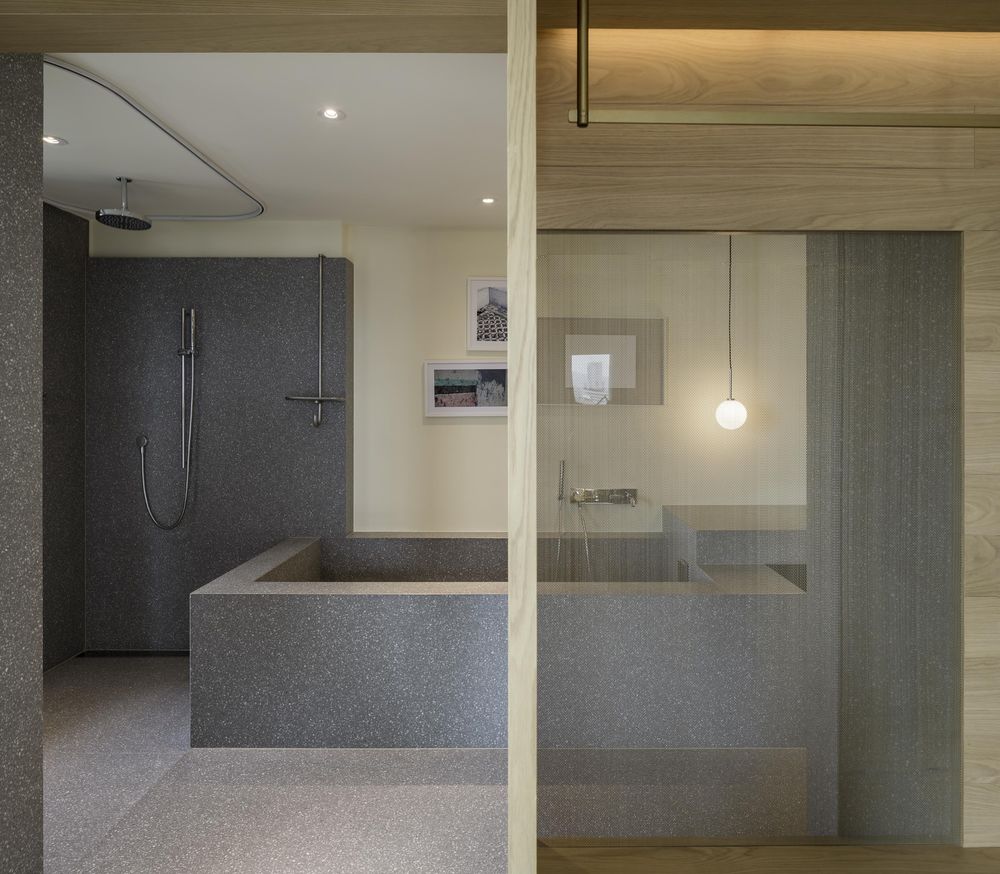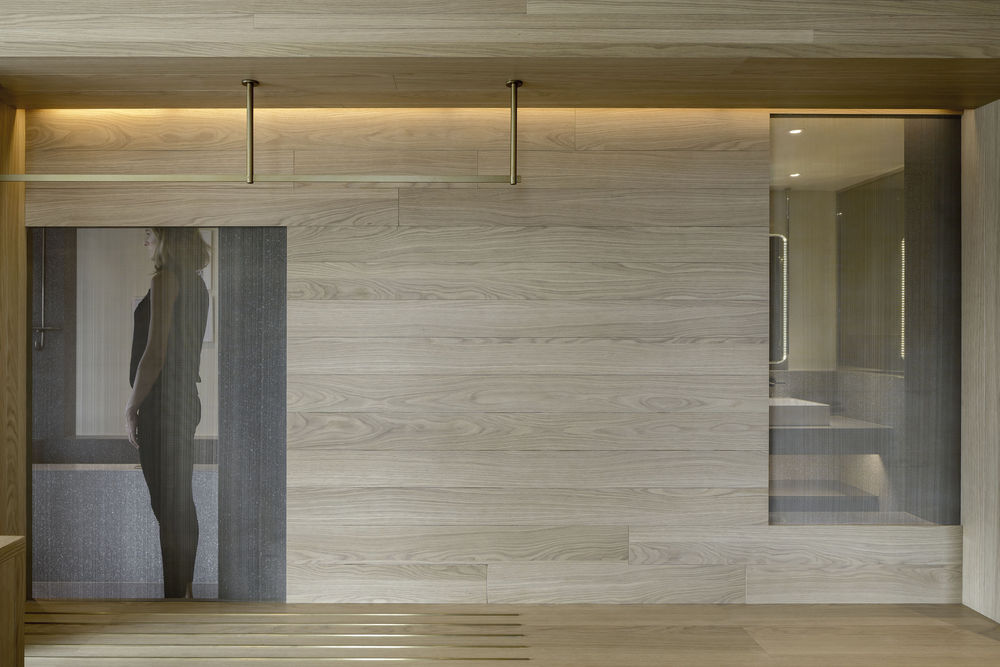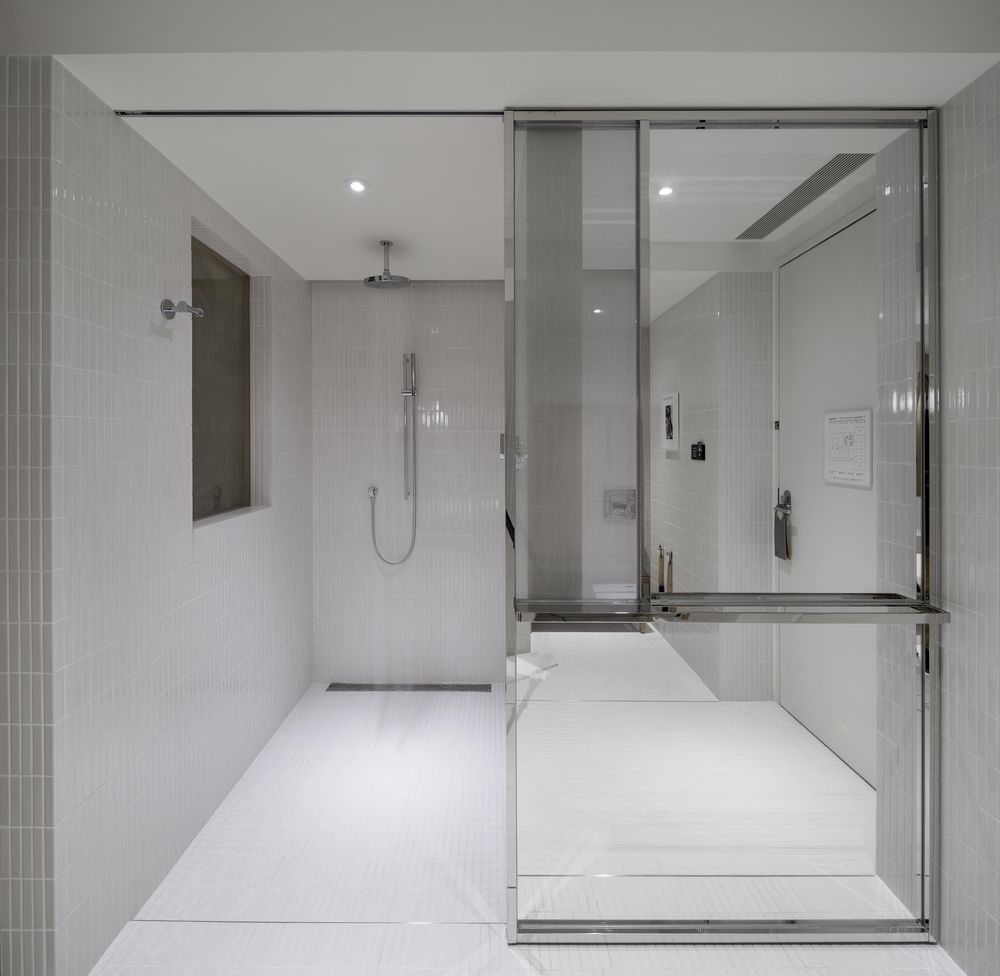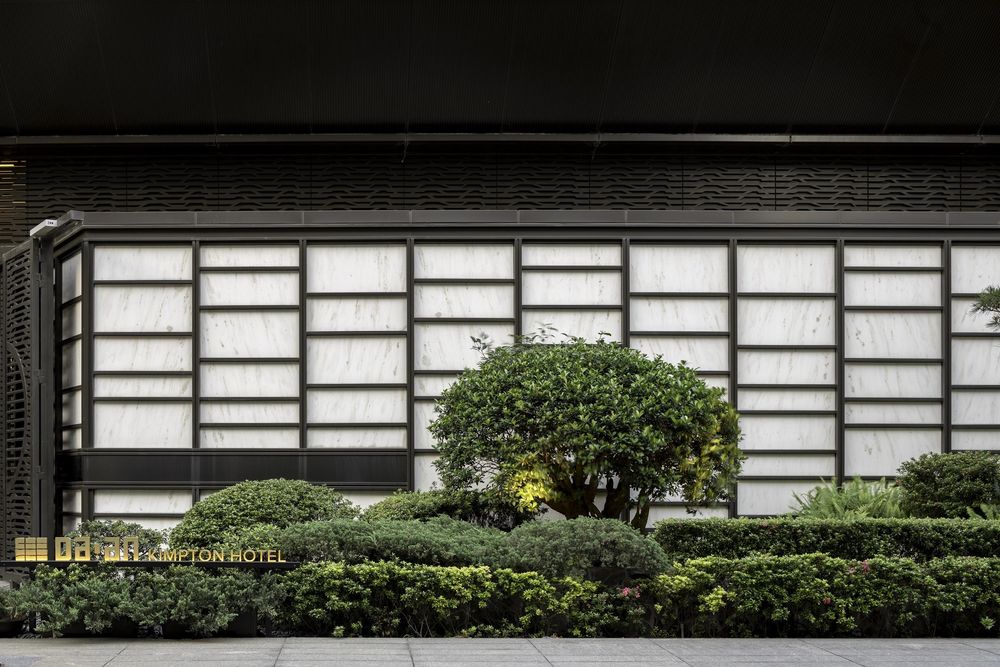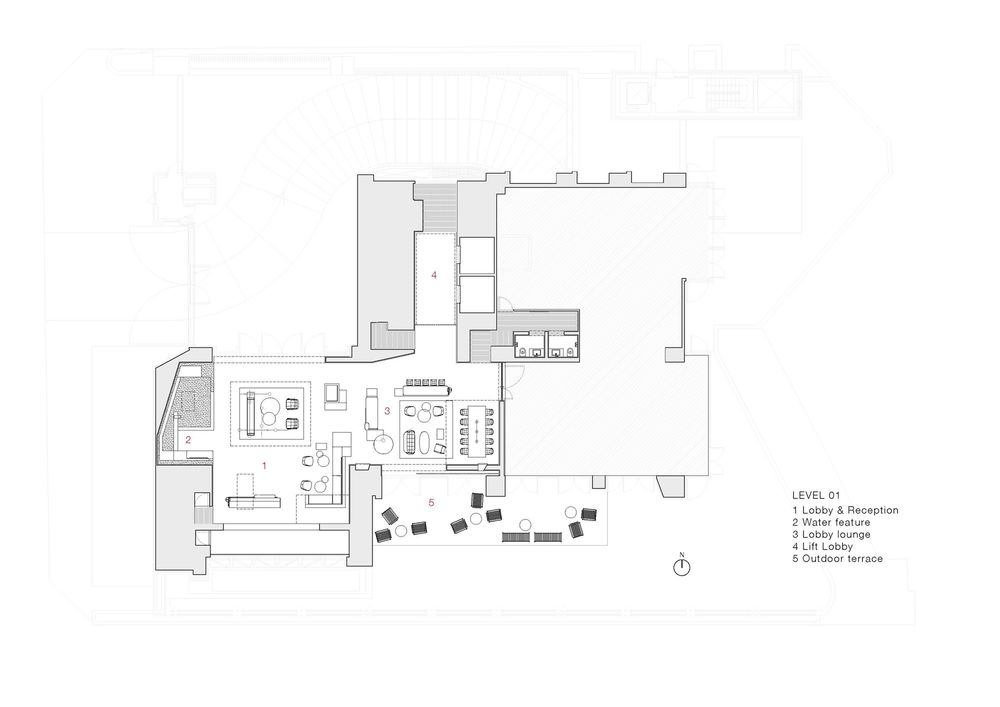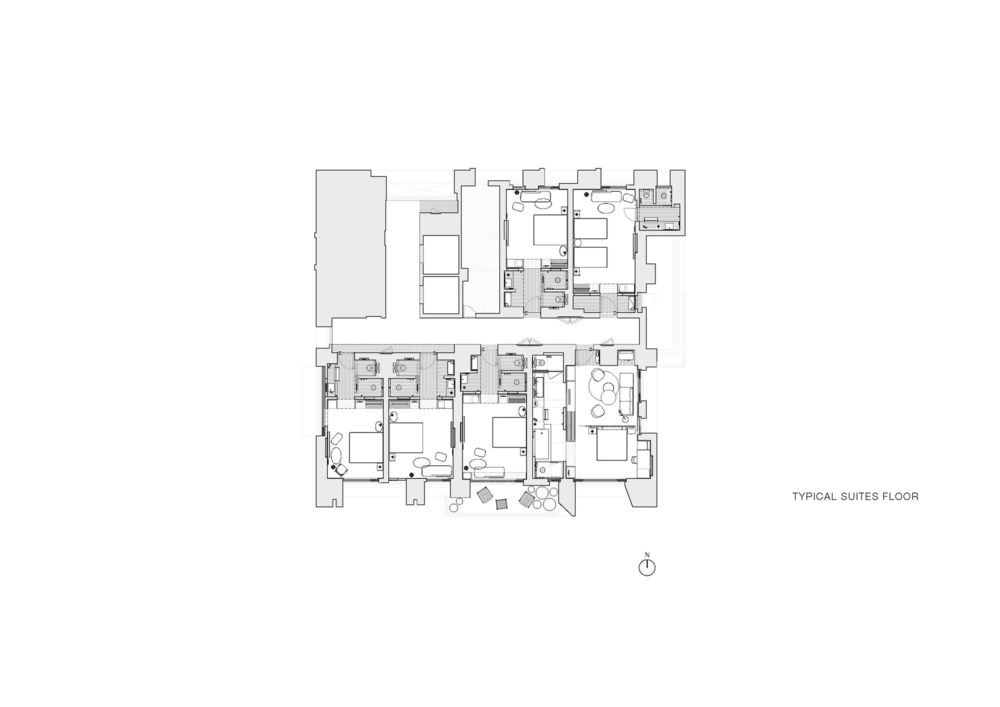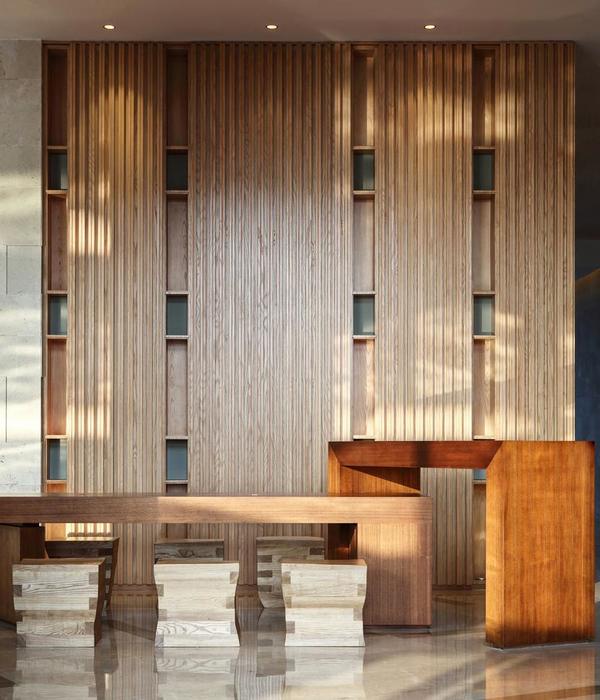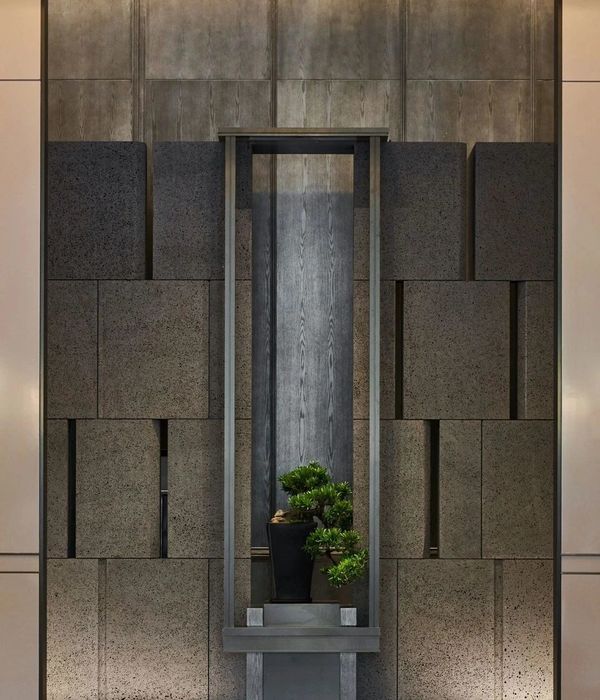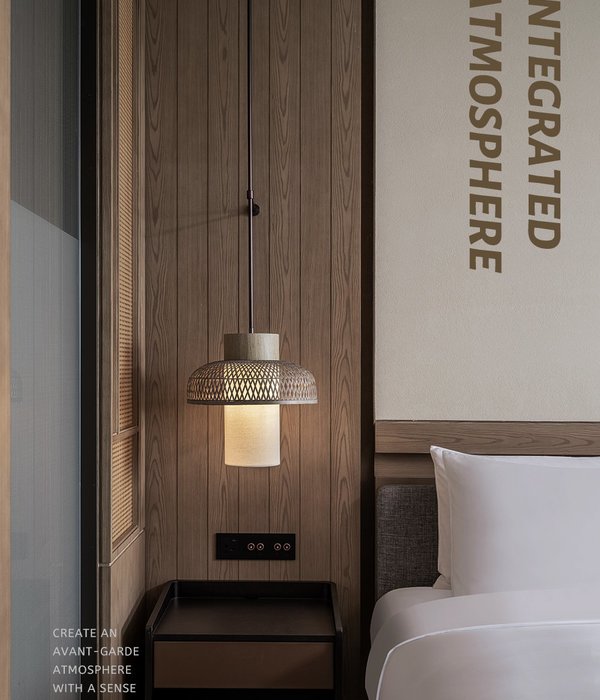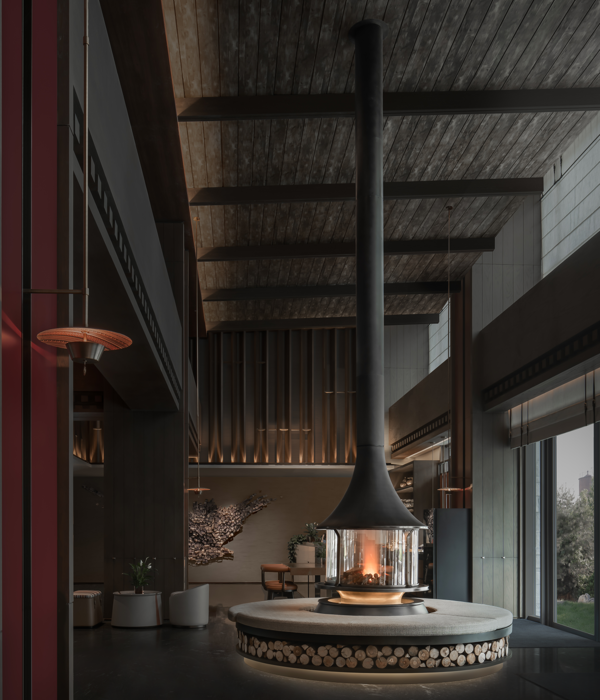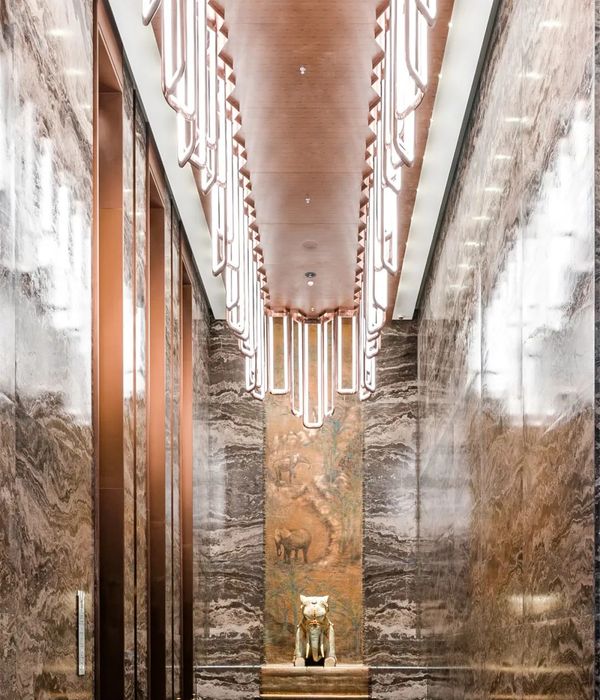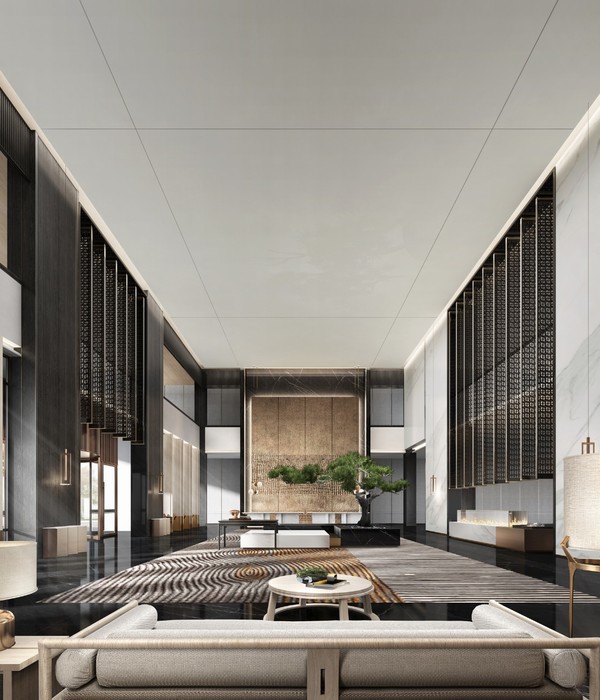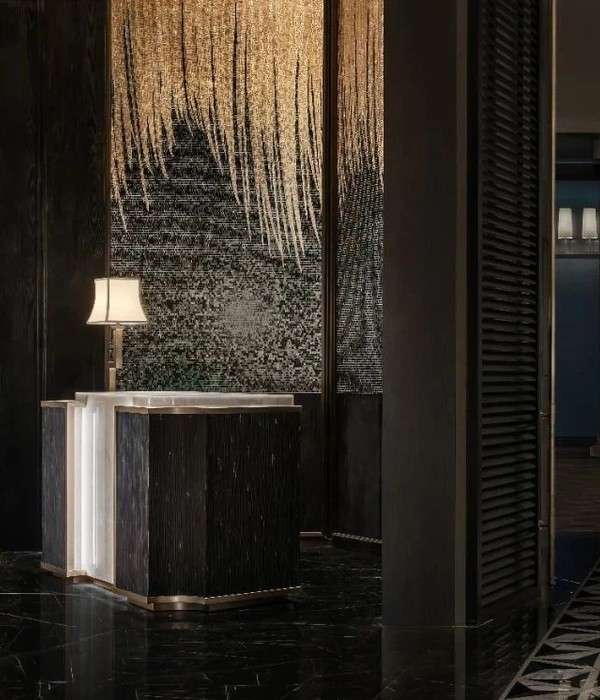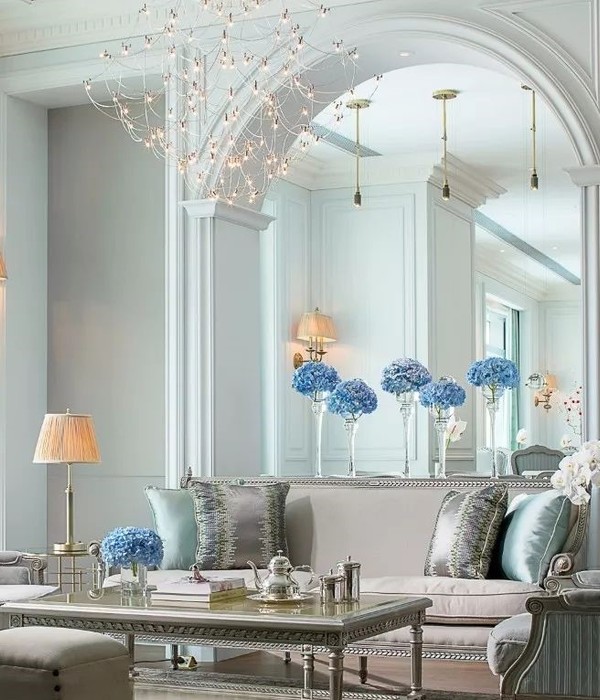台北如恩设计酒店,闹市中的宁静绿洲
Located in the pristine Da’an district of Taipei, the concept for the hotel design was to create an interior sanctuary – an urban retreat that offers a sense of calm and respite from the city’s bustling streets and alleys, without losing the vibrancy and richness of its unique urban context.
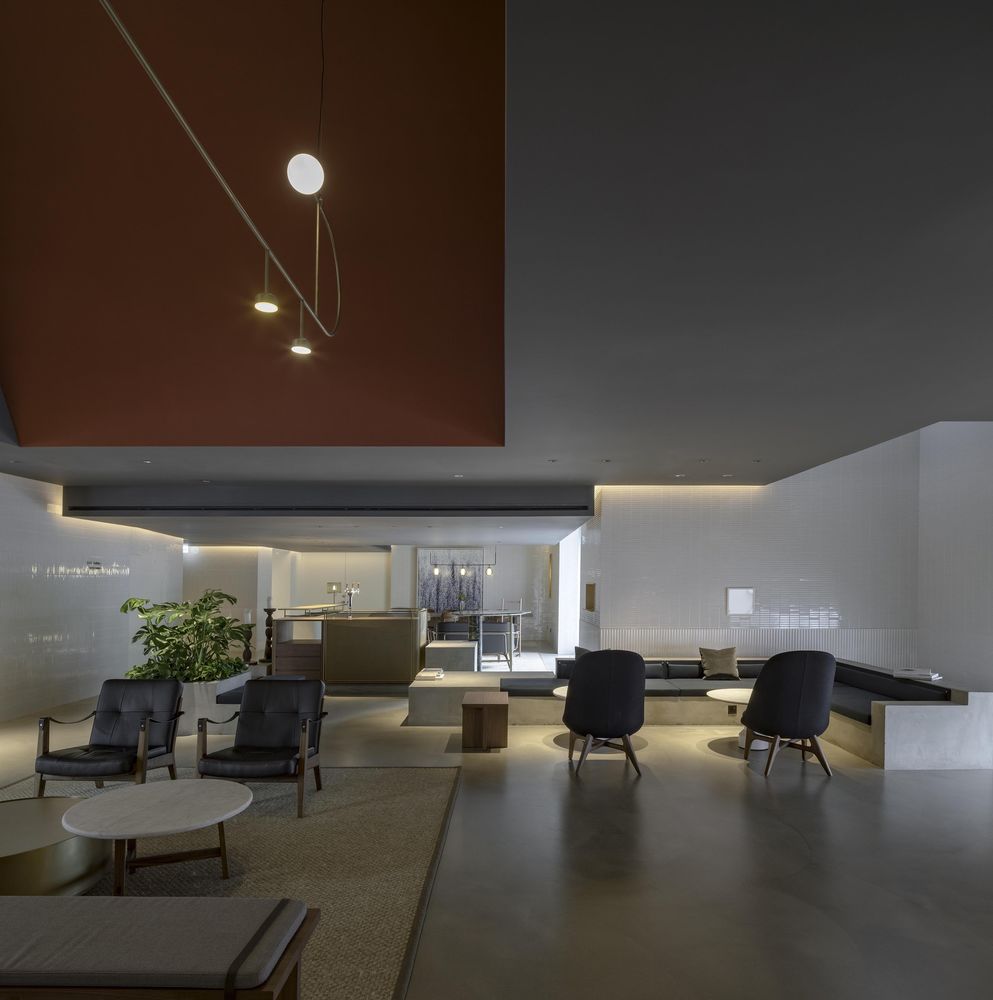
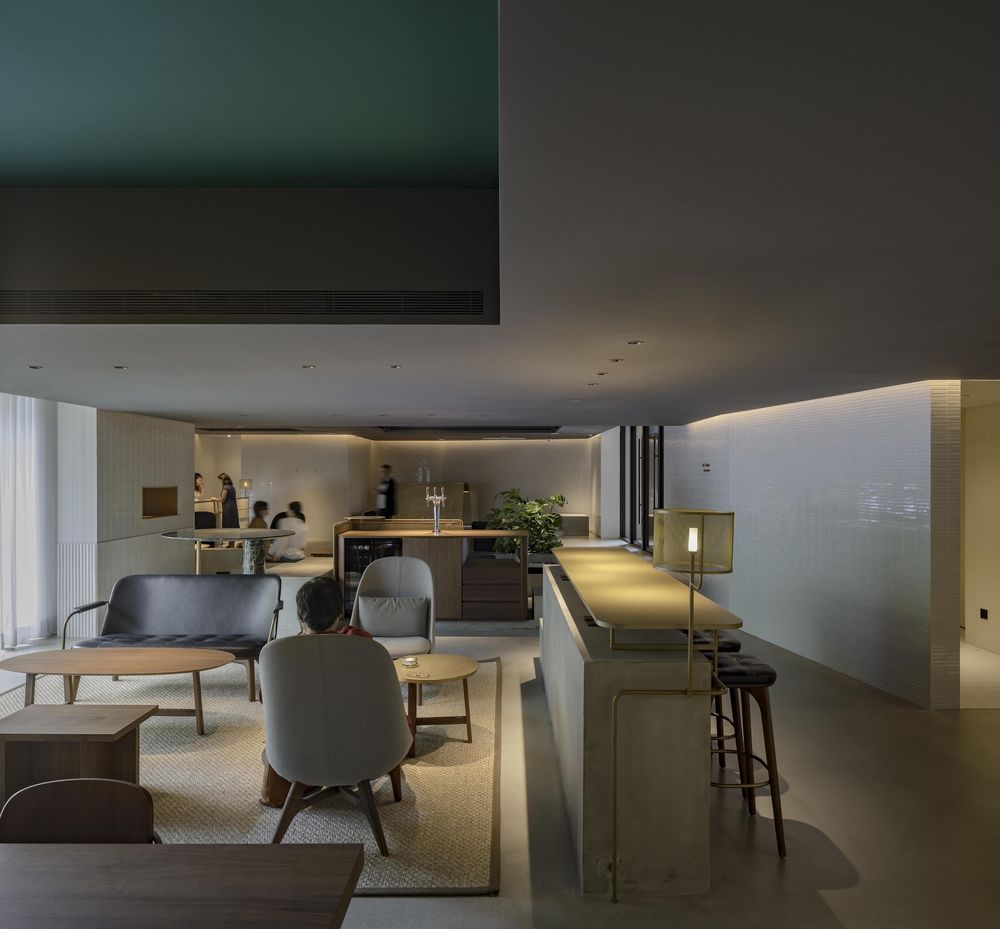

Every aspect of the hotel reflects the guiding concept of the “inner sanctuary”. Guests begin their journey on the ground floor by entering the lobby, greeted by an intimately scaled reception lounge. The key element of the ground floor lobby design was to insert a carved mass, letting natural light inside for a play with light and shadow. The sculpted high/low ceiling offers different spatial experiences – a cocooned space for the lounge area and the double height atrium at the arrival. The tiled walls with curated openings which frame the garden outside are a nod to the ubiquitous tile work often found in the alleys of Taipei, providing a quiet backdrop. Intricate metal-work takes inspiration from the layers of craftsmanship found in window and façade details in the surrounding neighborhood.
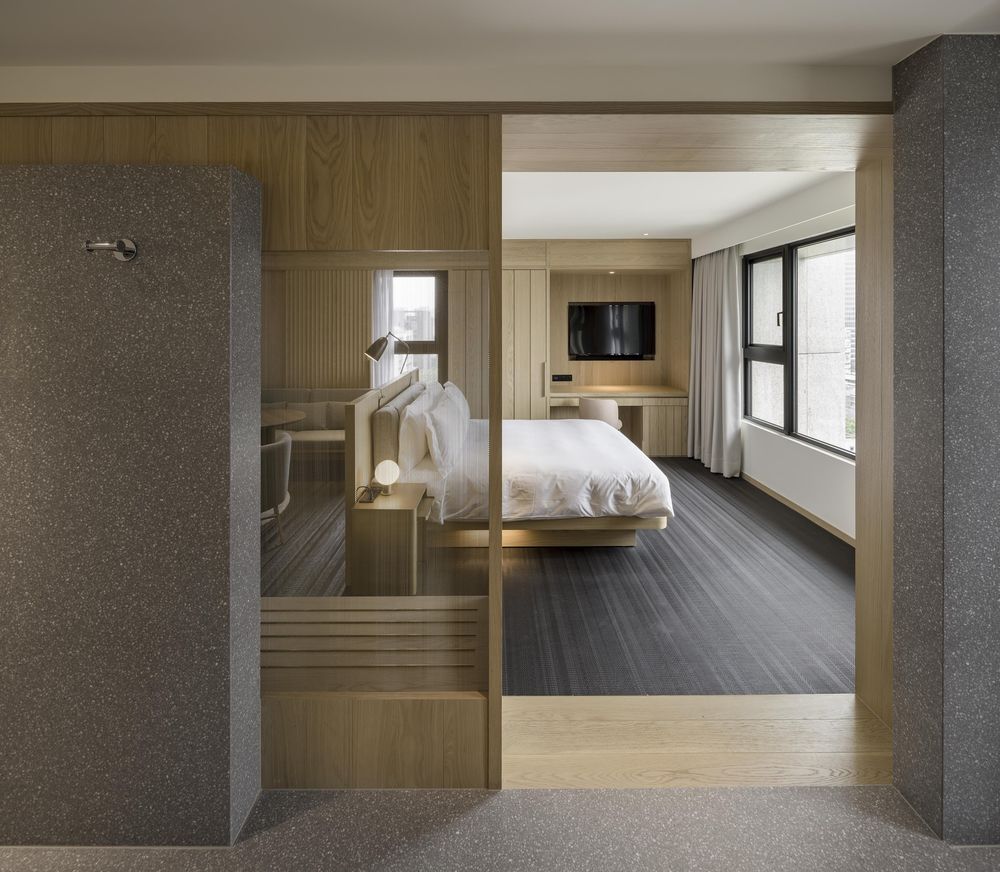
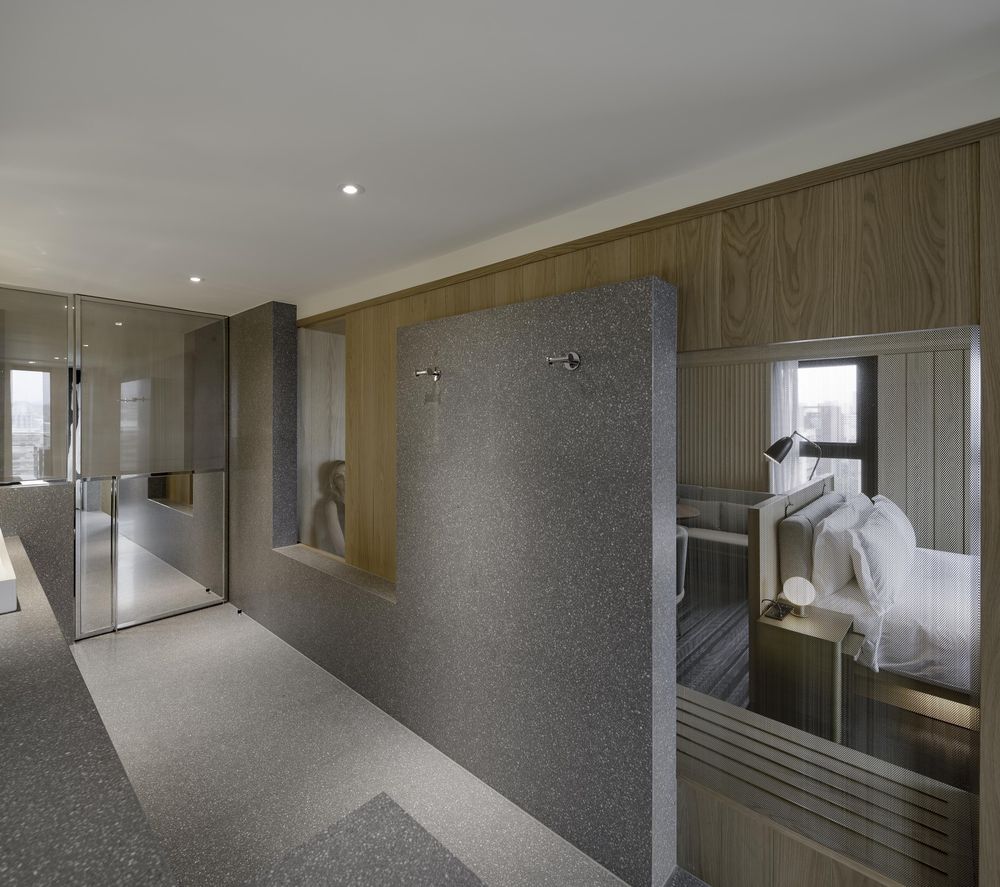
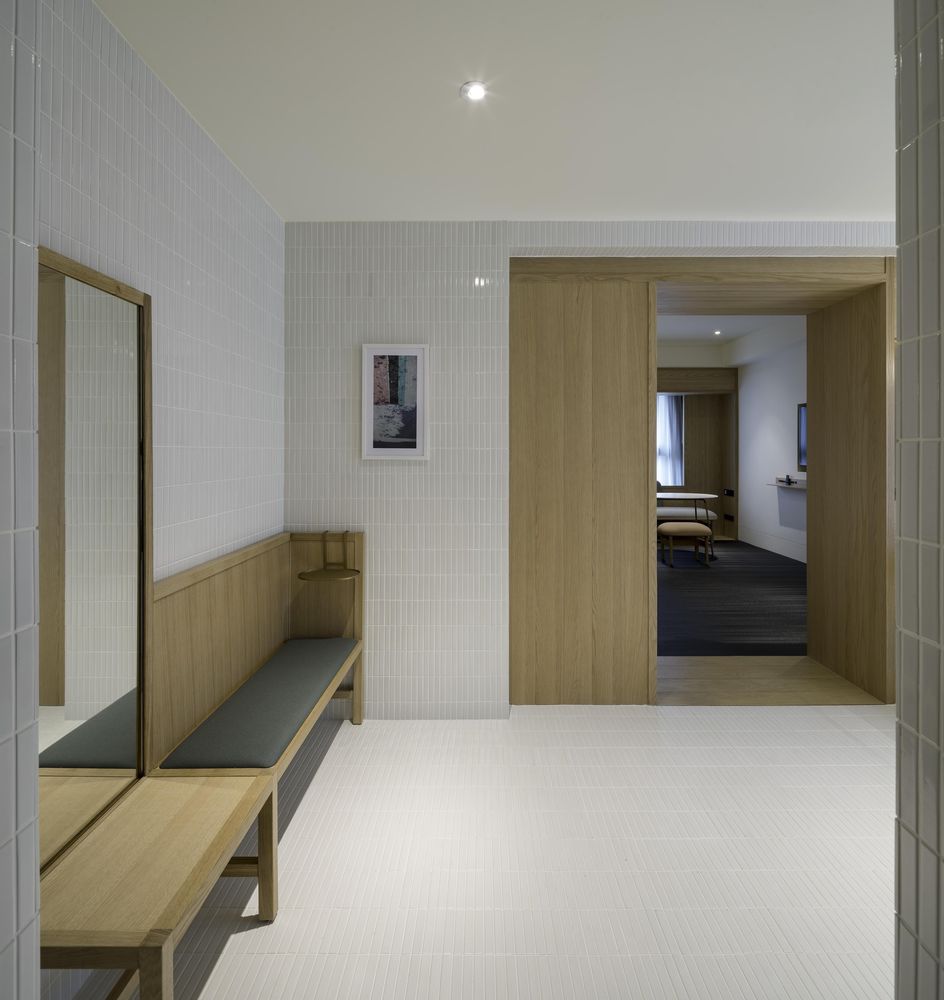
The guestrooms offer the most intimate and personal experience of the sanctuary concept. Wooden insertions, expressed as thresholds门槛, sectionalize the room to create in-between spaces. Enclosed in between the thresholds, this space offers a momentary retreat – an introverted space for contemplation. Punctured openings and windows in light-coloured wooden thresholds offer optional views internally and externally to the outside.
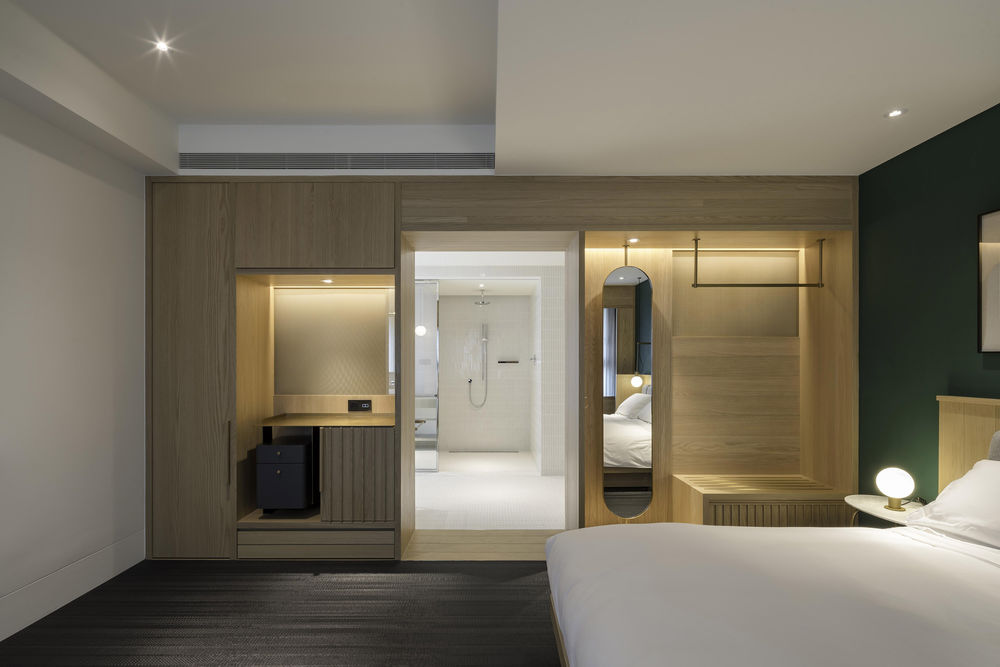
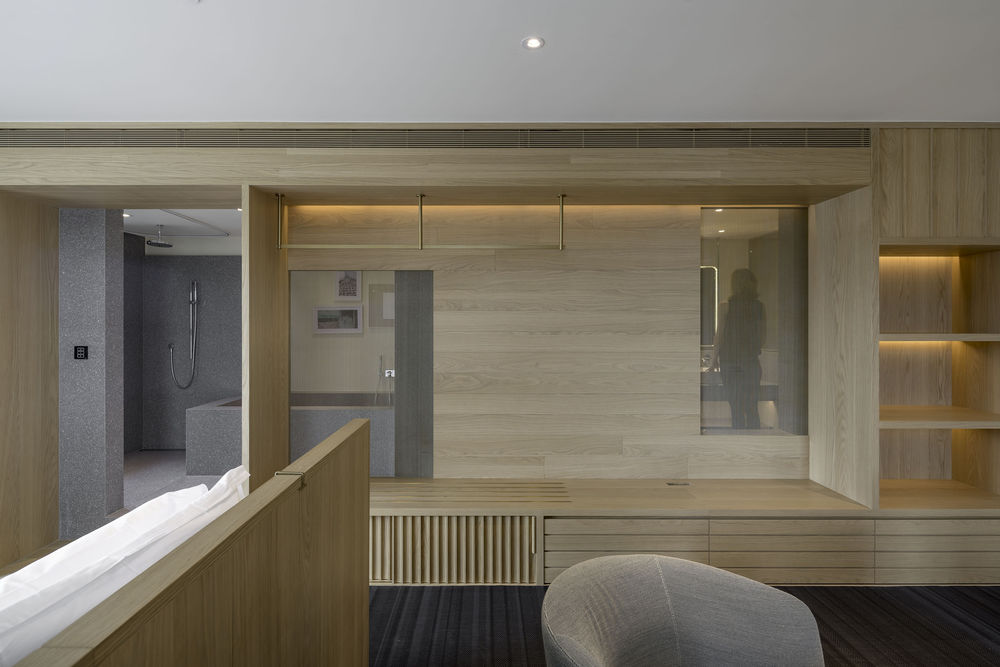

The challenge for Kimpton Da An was how to convert a residential building into a hotel due to the idiosyncrasies of the plan. To work with the many variances across the room types, bespoke wooden millwork elements were strategically tailored to each room type to create various functions catering to the guests' needs. Windows and doors are integrated into the wooden millwork giving access to the balcony and revealing views to the exterior.

In contrast to the guestroom experience, the restaurant is a celebration of the communal dining experience as an extension to the rich street life culture of Taipei. Different communal areas are divided by continuous enfilade walls creating a series of interconnected spaces, a common arrangement and typology often found in Asia. Enfilade walls are lifted with wooded legs and detached from the existing building perimeter, giving it sense of ephemerality. The custom designed wallpapers on the enfilade walls feature richly colored fluted tiles and metal work patterns inspired by the street and alleys of Taipei.
